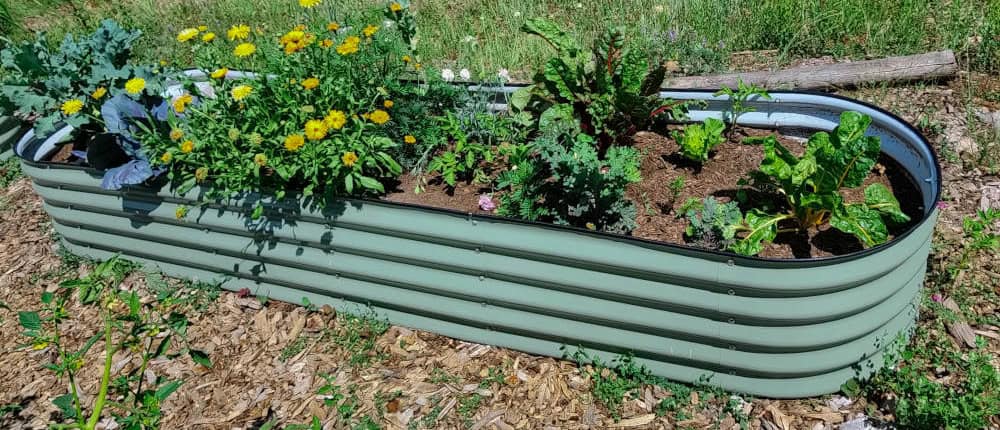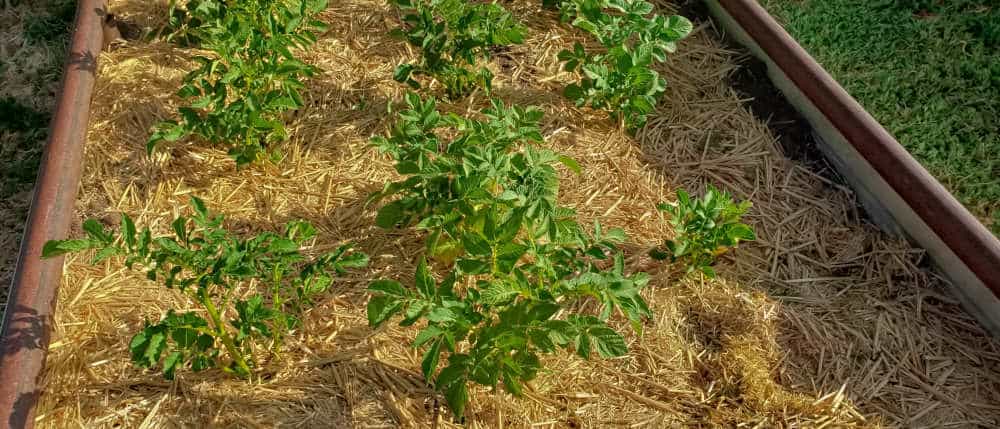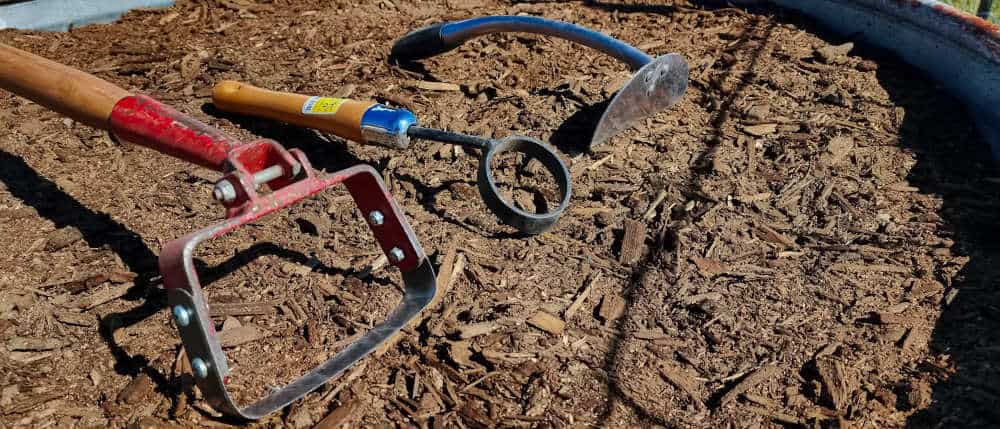Proactive Weed Management
A Gardener’s Guide
If you’ve ever felt like your time in the garden is a relentless battle against weeds, you’re not alone. It can feel like a constant struggle to beat back a green tide that threatens to overwhelm your carefully tended beds.
But what if the weeds you see are merely the tip of the iceberg? The true challenge—the vast, unseen mass of the problem—lies hidden beneath the surface in the form of your soil’s “weed seed bank” and the very conditions that favor its awakening.
Welcome to a more effective, “upstream” approach to weed management. This philosophy is about solving problems before they start by strategically managing the immense, hidden part of the iceberg, not just constantly chipping away at the tip. This guide will help you shift your role from a reactive “weed warrior” into a proactive “ecosystem architect.” We’ll also briefly reframe our relationship with “weeds,” acknowledging their ecological roles while focusing on how to manage the ones that compete with our crops.
Together, we will explore four key strategies:
- Understanding the “Weed Seed Bank”: Learning about the hidden source of future weeds.
- Using “Soil Armor”: How mulch and minimal disturbance keep weeds dormant.
- Employing Smart Tactics: Dealing intelligently with the weeds that do emerge.
- Shifting the Soil: Creating a garden where your crops naturally outcompete weeds.
Prepare to spend less time weeding and more time enjoying a thriving, resilient garden.
Weed seed bank.
The Hidden Challenge
Understanding Your Soil’s “Weed Seed Bank”
Effectively managing weeds means adopting an “upstream” perspective—the philosophy of solving problems before they start. This begins with understanding the hidden force at work in your garden’s soil: the weed seed bank.
This concept is the key to shifting from a reactive “spray and pray” approach to a proactive one, where you’ll know exactly how to prevent weed issues and effectively deal with any that do pop up.
The weed seed bank refers to the total amount of viable weed seeds present in your soil. It is a dynamic record of the land’s history, a “bank account” where deposits are made each time a weed is allowed to set seed. The scale of this hidden reservoir is staggering; agricultural soils can contain thousands of viable seeds per square foot, some of which can remain dormant for decades, waiting for the right conditions. Common purslane seeds can remain viable for 40 years, and mullein seeds for over a century. This immense and persistent “memory” in the soil is why weeds can seem to appear from nowhere, year after year.
One of the most profound examples of this is the Beal Seed Viability Experiment, one of the world’s oldest ongoing scientific studies. In the fall of 1879, Professor William James Beal of what is now Michigan State University wanted to help farmers by determining how long common weed seeds could remain dormant. He buried 20 bottles filled with sand and seeds from 23 common weed species. In 2021, after 141 years in the soil, seeds of moth mullein (Verbascum blattaria) still germinated. This remarkable experiment demonstrates the incredible persistence of seeds in the soil.
These seeds are not dead; they are dormant, waiting for an “alarm clock” to awaken them. The primary triggers are exposure to light, a shift in soil temperature, and the arrival of moisture and oxygen. Digging or rototilling turns the soil, bringing countless dormant seeds to the surface, exposing them to light and air, and effectively sounding a massive alarm that awakens a sleeping army of weeds in your garden.
Knowing this leads to a profound shift in your goal. The most effective long-term strategy is not simply to kill every weed that appears, but to keep the vast majority of the weed seed bank dormant. Your focus moves from a reactive battle to a proactive system of dormancy management. This transforms your role from a “weed warrior” into a “seed bank manager” – a strategist who uses your knowledge to prevent problems before they begin. All the techniques that follow are designed to serve this single, powerful principle: let sleeping weeds lie.
Straw as soil armor.
Your First Line of Defense
The Power of “Soil Armor”
With the goal of keeping the weed seed bank dormant, your first and most powerful line of defense becomes clear: protecting the soil surface. This soil armor consists of two interconnected principles –
Principle 1: Keep the Soil Covered (Mulch)
The best, most effective way of preventing light-triggered weed seed germination is by blocking the light, and mulch should be your primary tool. A thick layer of organic material shields the soil surface, creating a physical barrier and depriving the vast majority of weed seeds in the seed bank of the light they need to sprout.
Different organic mulches can be used to achieve this, each with unique characteristics for weed control:
- Straw: A classic choice for vegetable gardens, a thick layer (6-8 inches, as it settles) provides excellent light-blocking coverage around larger plants like tomatoes and squash.
- Shredded Leaves: These form a denser mat that is highly effective at smothering emerging small weeds between more closely spaced plants.
- Wood Chips/Arborist Chips: Due to their longevity, these are ideal for creating a durable, long-term weed barrier in perennial beds and pathways.
While the weed-suppressing power of mulch is a primary reason to use it, the benefits don’t stop there. Mulching is a cornerstone of overall garden vitality. For a deeper look into how organic mulches also conserve moisture, moderate soil temperature, and feed the soil food web, we invite you to read our comprehensive “Soil Health Insights” article.
Principle 2: Minimize Soil Disturbance (No-Dig/No-Till)
Minimizing soil disturbance removes the invitation for weeds to germinate in the first place. It directly prevents the alarm clock of tillage from waking the dormant seed bank. Beyond weed control, this practice preserves the delicate architecture of healthy soil, protecting the vital tunnels created by earthworms and the web-like fungal hyphae networks essential for nutrient transport.
A powerful no-dig technique for converting weedy or grassy areas is sheet mulching (or lasagna gardening). By layering a weed barrier like cardboard with alternating layers of “greens” (like grass clippings) and “browns” (like shredded leaves), and topping it with compost, you can smother existing vegetation and build fertile soil from the top down, all without turning a single spadeful of soil. For loosening compacted soil without destructive tilling, a broadfork is an invaluable tool. It gently lifts and fractures the soil, creating channels for air and water while preserving the soil’s layers and keeping the weed seed bank dormant.
The practices of mulching and minimal disturbance are an active investment in your garden’s future, paying a double dividend of immediate weed suppression and long-term soil improvement.
Weeding tools.
From Battle to Finesse
Managing the Weeds That Emerge
No prevention system is flawless. Some weeds will inevitably find a way through your soil armor. The key to managing these escapees lies not in brute force, but in intelligence and timing.
The single most important rule for reducing weeds is this: do not let weeds flower and set seed. Every weed pulled, cut, or trimmed before it flowers is an investment in an easier season next year. Over a five-year period in Nebraska, weed seed banks were reduced to 5% of their original density when weeds were not allowed to produce seeds. However, in the sixth year, weeds were not controlled and the seed bank density increased to 90 percent of the original level (Burnside et al., Agronomy Journal 1986). Preventing weeds from going to seed is the cornerstone of reducing future weed populations.
Effective weeding is all about timing. The best, most efficient, and least work approach is when weeds are at their smallest – the “white thread” stage, where they have just germinated. But there is another, less known reason to remove young weeds with urgency: allelopathic warfare.
Many common weeds release chemical compounds from their roots that can inhibit the germination and growth of your nearby vegetable seedlings. A newly sprouted weed is not just a future competitor; it can be an immediate chemical threat.
Interestingly, you can turn this chemical warfare to your advantage. By allowing a first flush of these allelopathic weeds to grow 2-3 inches tall and then slicing them down with a stirrup hoe, you leave their growth-retarding compounds in the top layer of the soil. This can create a temporary window of 3-6 weeks where other weed seeds are suppressed, giving you a perfect opportunity to transplant your tomatoes, peppers, or other starts into a less competitive environment.
For managing these tiny, emerging weeds, a stirrup hoe (or scuffle hoe) is exceptionally efficient. With a gentle push-and-pull motion, its blade skims just below the soil surface, slicing off tender weed seedlings from their roots with minimal soil disturbance.
For deep-rooted perennial weeds like bindweed or thistle, the strategy is one of relentless exhaustion. In addition to persistently removing every bit of top growth, planting a densely seeded, multi-species cover crop mix, like our Garden Cover Up Mix, can be a highly effective long-term strategy. The dense growth shades the soil and physically crowds out the emerging tendrils, while the roots work to improve soil structure, creating an environment that increasingly favors your crops over the persistent weeds.
By understanding the critical timing of a weed’s life cycle and the hidden threat of allelopathy, you can shift from using a sledgehammer to using a scalpel, respecting the garden ecosystem and your own time and energy.
Basil and marigolds.
The Ultimate Goal
Shifting Soil to Favor Crops Over Weeds
The final and most advanced stage of proactive weed management moves beyond defense to offense. It involves consciously shaping your garden’s entire ecosystem to create an environment where your desired crops have such a profound competitive advantage that weeds struggle to gain a foothold.
The core concept lies in shifting your soil’s microbial community. Bare, compacted, or frequently disturbed soil is typically bacterially-dominated—often considered to be in “survival mode.” The plants that thrive in this early successional stage are the pioneer plants we call annual weeds. As organic matter accumulates and the soil is left undisturbed, however, fungal populations grow and create a more complex ecosystem.
This mature, fungal-dominated soil is precisely the environment that most of our established vegetable crops prefer.
Your gardening practices can actively steer this succession. Every time you avoid tilling, you protect the fragile fungal networks. Every time you add a carbon-rich mulch like shredded leaves or wood chips, you are providing the ideal food for fungi. Through these actions, you become an ecosystem architect, consciously shifting the soil environment away from one that favors weeds and toward one that gives a distinct advantage to your crops.
Another powerful strategy to support this goal is creating a ‘living canopy’ with your desired plants. The goal is to keep your plants dense and strategic so that their foliage completely shades the soil surface. Remembering that many seeds in the weed seed bank need a flash of light to germinate, this living canopy acts as a natural, light-blocking barrier.
This holistic approach is the result of proactive weed management, where you learn to work with the garden’s system, not just on it. The gardener’s role evolves from that of a laborer engaged in a constant battle to that of an architect—one who designs a system where the internal relationships maintain a healthy balance, and weeds are not so much defeated as they are designed out of the system.





